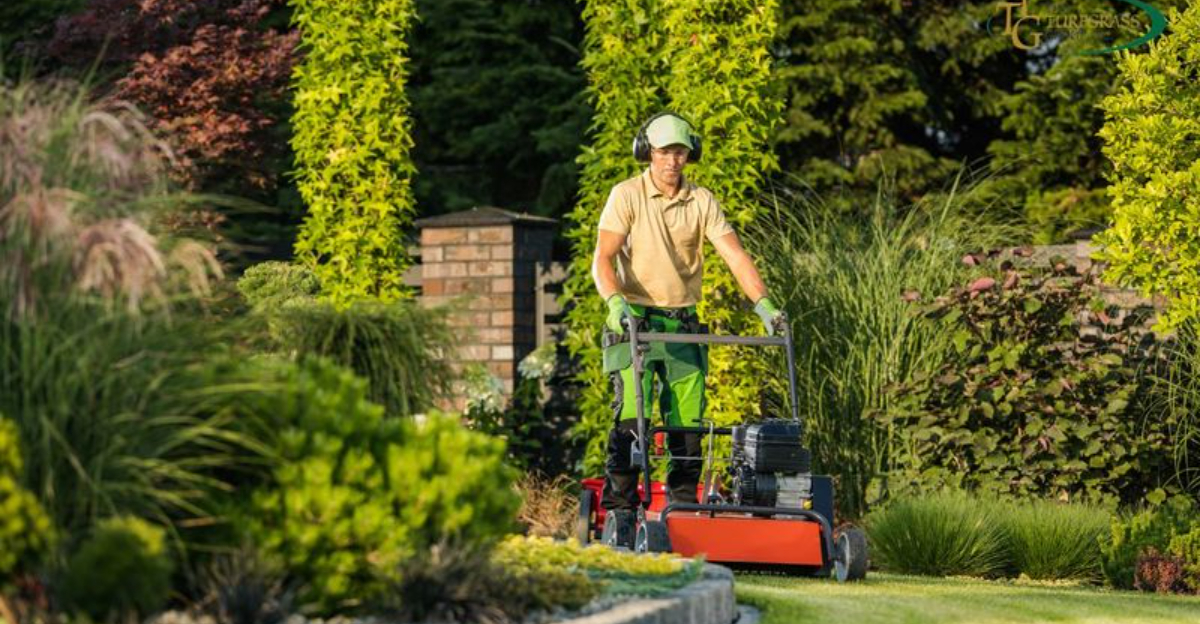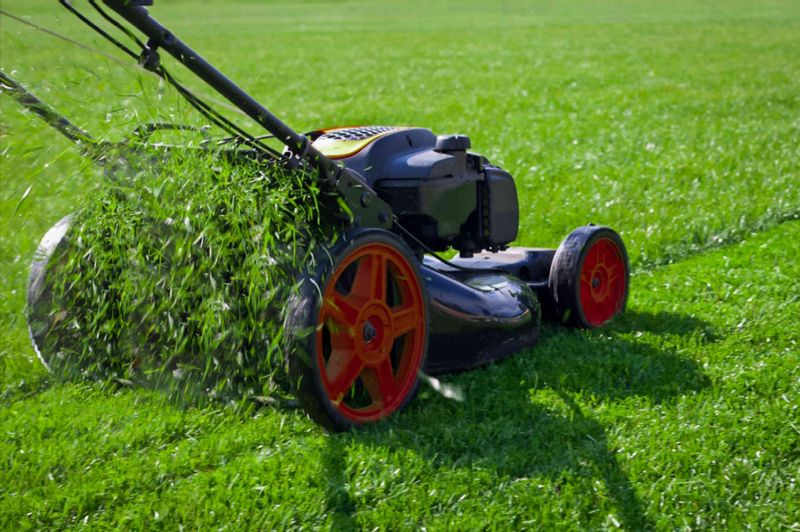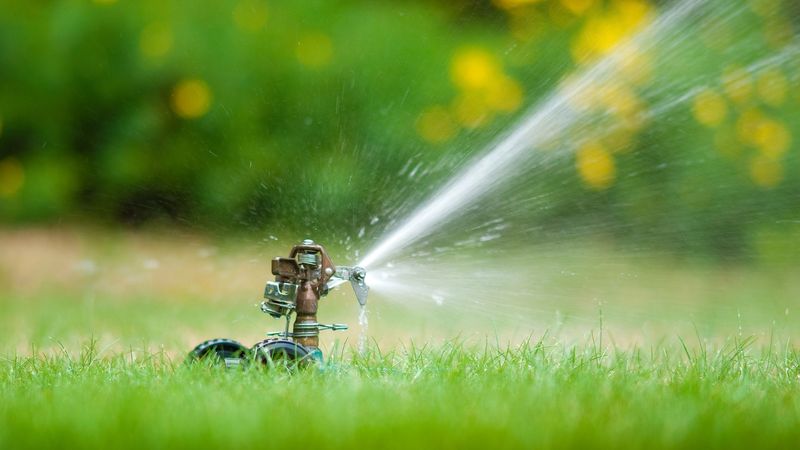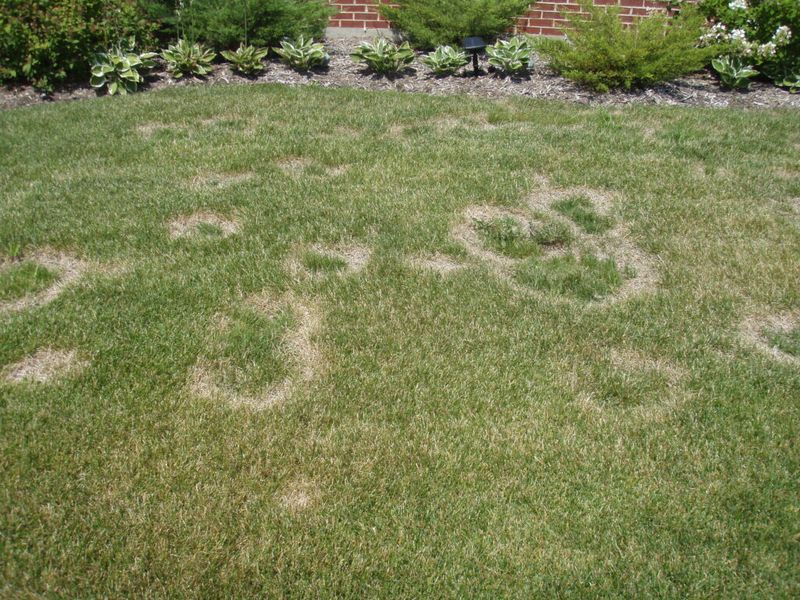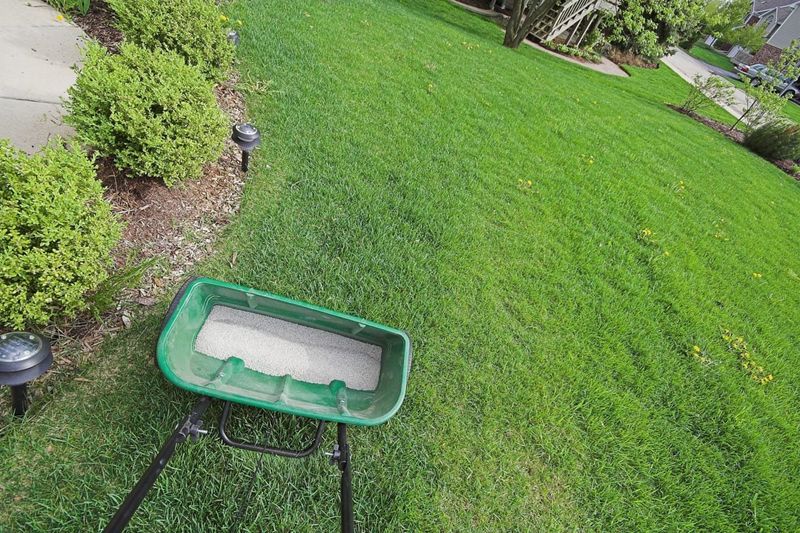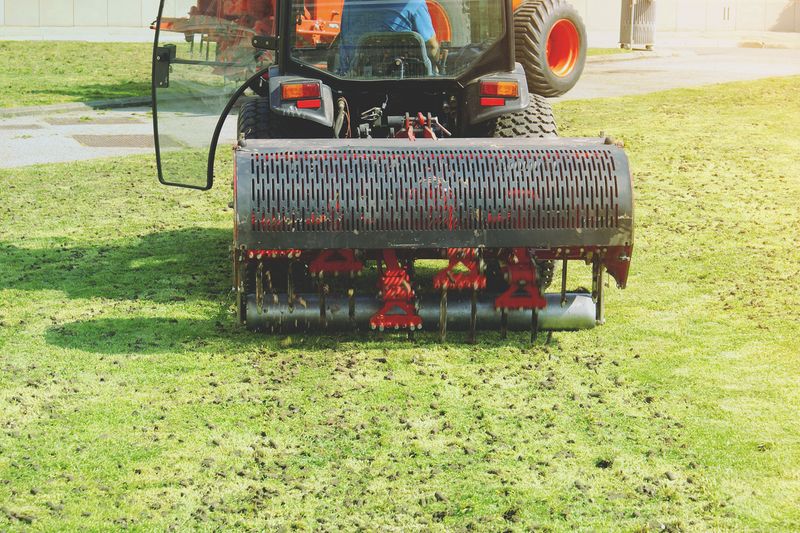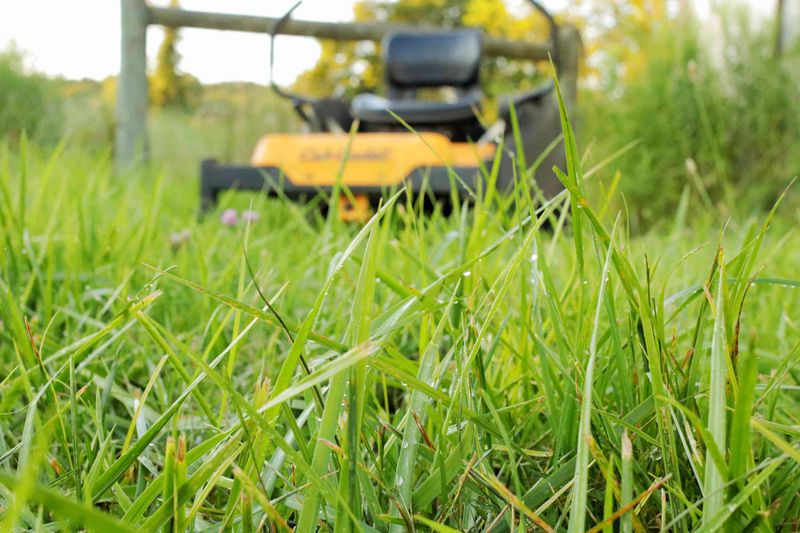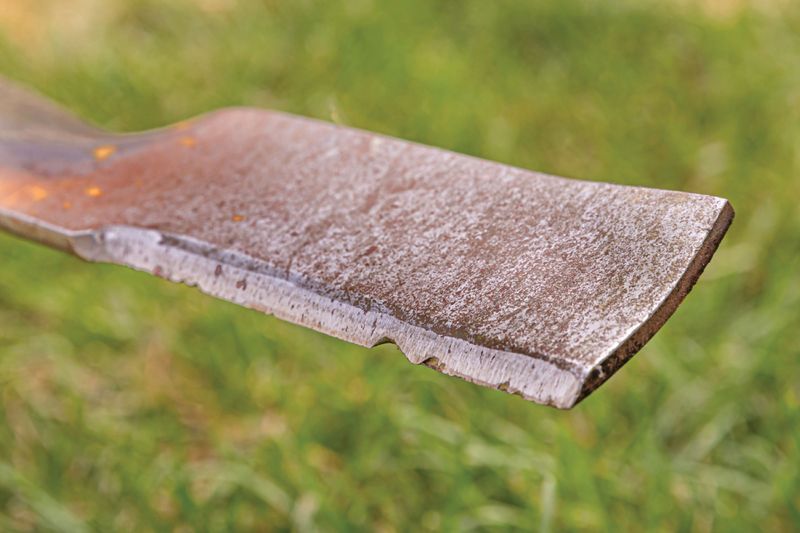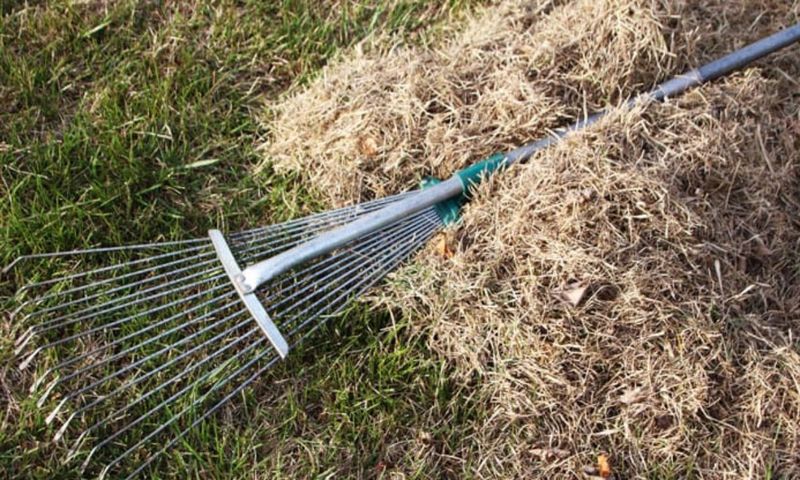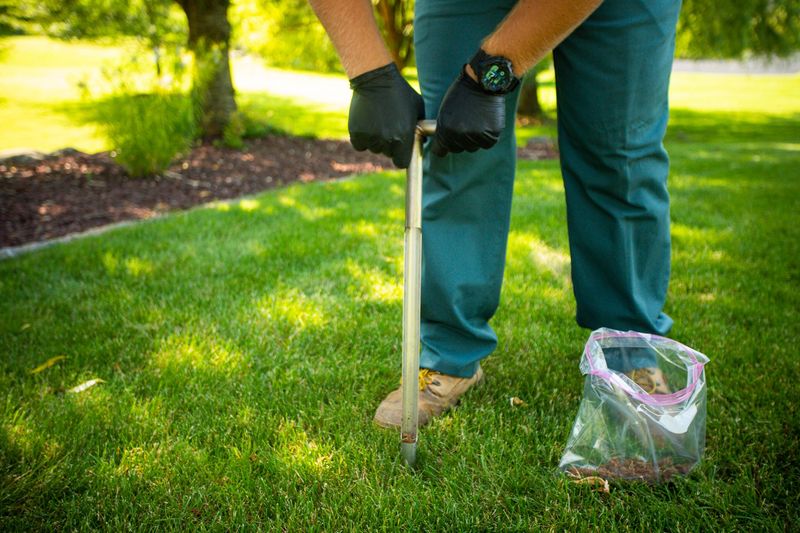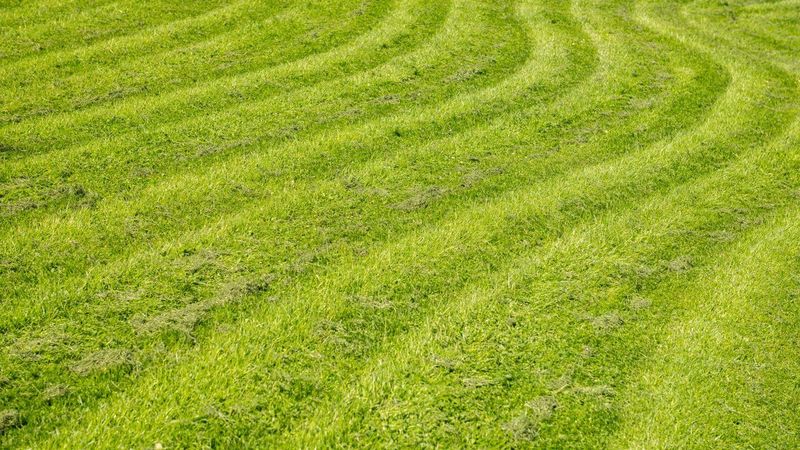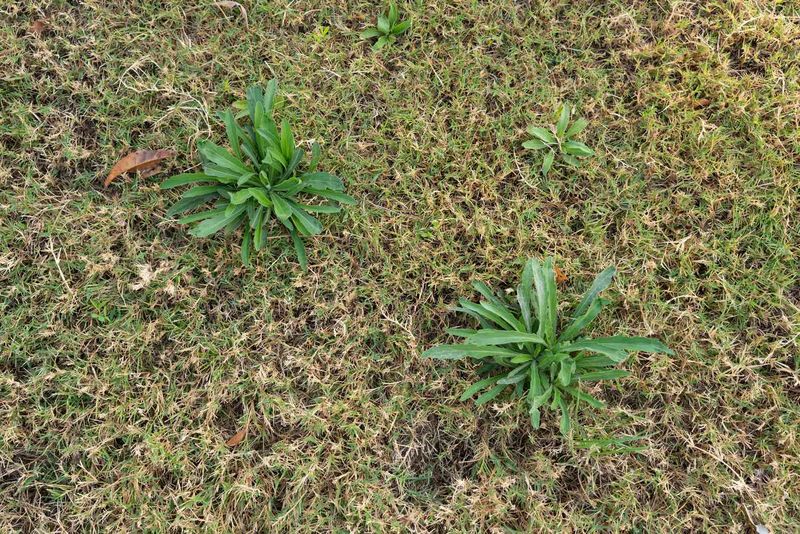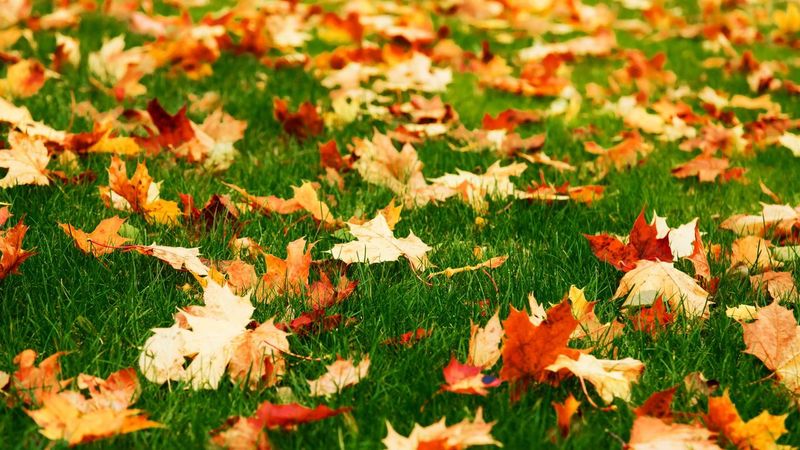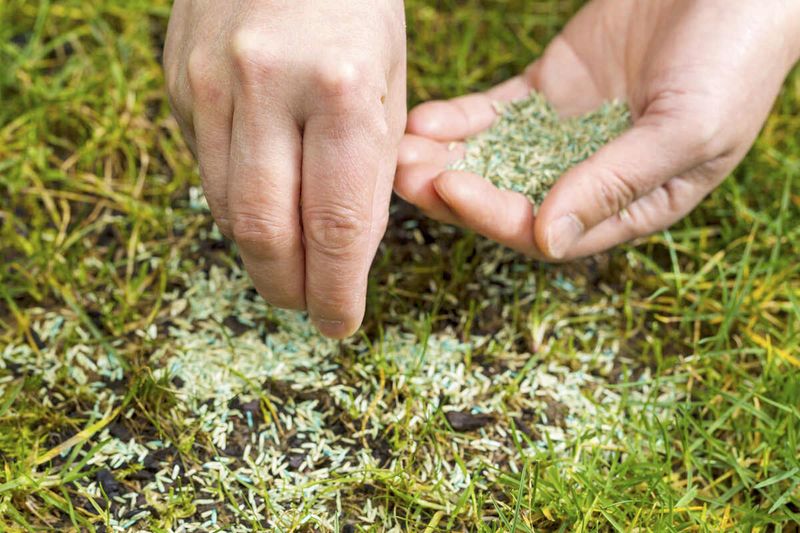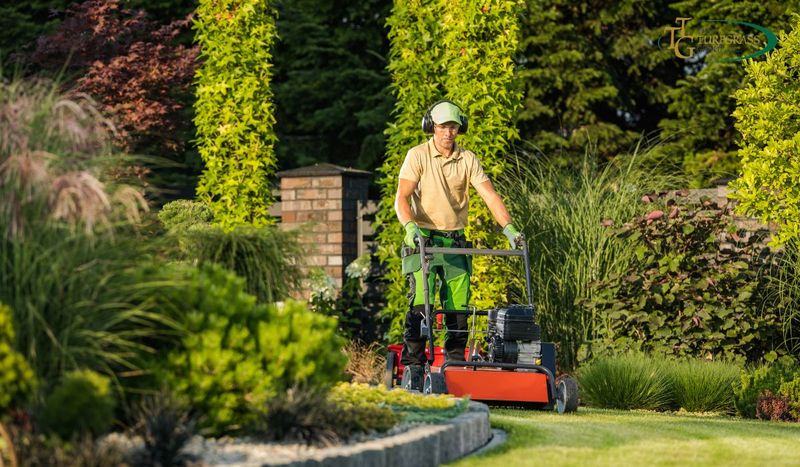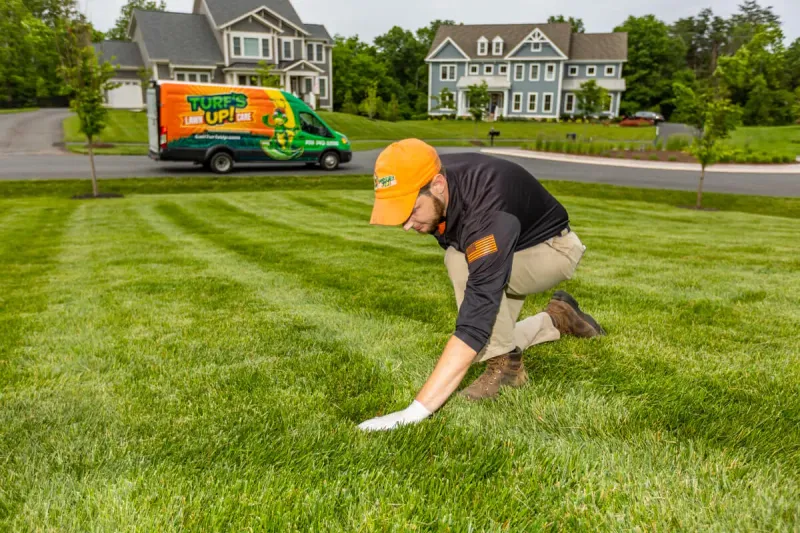Maintaining a lush, green lawn is more than just a weekend chore; it’s an art that requires understanding and avoiding common pitfalls.
Whether you’re a seasoned gardener or just starting, steering clear of these 15 mistakes will keep your lawn vibrant and healthy throughout the seasons.
From watering practices to mowing techniques, each aspect of lawn care plays a crucial role in the overall health of your grass.
Let’s explore these common mistakes and learn how to avoid them for a lawn that’s the envy of the neighborhood.
1. Mowing Too Short
Cutting your lawn too short can be a detrimental mistake, as it puts undue stress on the grass and exposes the roots to harsh sunlight and environmental conditions.
This practice, often referred to as ‘scalping,’ leaves the grass vulnerable to diseases and weed invasion. Short grass blades struggle to absorb sunlight and perform photosynthesis effectively, hampering growth.
Maintaining an appropriate grass height encourages a robust root system, leading to a thicker, healthier lawn. Consider adjusting your mower’s settings to a higher cutting level, and mow more regularly to keep your lawn looking its best without causing unnecessary damage.
2. Overwatering
Excessive watering can lead to a host of problems for your lawn, including shallow roots and the development of fungal diseases. While it may seem like more water equals a healthier lawn, this is a common misconception.
Continuous saturation prevents oxygen from reaching the roots, causing them to grow closer to the surface and making the grass more susceptible to drought conditions.
Overwatered lawns are also a breeding ground for molds and fungi, which can quickly spread and damage the grass. Aim to water deeply but infrequently, allowing the soil to dry out between sessions, encouraging deep root growth.
3. Underwatering
Failing to provide your lawn with sufficient water can lead to stunted growth and unsightly dry patches. Grass needs a consistent supply of moisture to thrive, and insufficient watering disrupts this balance.
During hot weather, lawns can quickly become dehydrated, losing their lush green appearance and turning brown. Regular, deep watering ensures that moisture reaches the root zone, promoting healthy growth and resilience against drought.
Pay attention to weather conditions and adjust your watering schedule accordingly to maintain a thriving lawn, using tools like rain gauges to monitor rainfall.
4. Using Too Much Fertilizer
Applying too much fertilizer can burn your lawn and create nutrient imbalances that harm the grass. While the intention is to nourish, over-fertilization can lead to excessive growth, making the grass more susceptible to disease and pests.
Excess nutrients, particularly nitrogen, can cause the grass to grow too fast, weakening the root system and affecting the soil’s overall health. To avoid this, follow recommended application rates and schedules.
Using organic or slow-release fertilizers can also help maintain balance, providing nutrients gradually and reducing the risk of burning.
5. Skipping Aeration
Regular aeration is crucial for maintaining a healthy lawn, yet many homeowners overlook this essential task. Compacted soil restricts the free movement of water, air, and nutrients, negatively impacting grass health.
Without adequate aeration, your lawn may develop thin patches and become less resilient to stress and drought. Aeration involves perforating the soil with small holes to allow essential elements to penetrate the root zone.
This simple practice can rejuvenate your lawn, promoting robust growth and improving its overall appearance. Schedule aeration at least once a year, preferably in the fall or spring.
6. Mowing Wet Grass
Mowing wet grass is a common mistake that can lead to uneven cuts and clumping, which smothers the lawn and encourages disease. Wet grass doesn’t cut cleanly, sticking to mower blades and creating a mess.
These clumps can block sunlight and create a perfect environment for fungus to thrive, causing potential damage to the grass. To avoid this, wait for the grass to dry before mowing, ensuring a clean and even cut.
Regular maintenance of mower blades and equipment can also help prevent issues related to mowing damp lawns, keeping your grass healthy and well-groomed.
7. Dull Mower Blades
Using dull mower blades is detrimental to your lawn’s health, as they tear the grass rather than cutting it cleanly. This tearing action weakens the grass, making it more susceptible to diseases and stress.
Ragged cuts can lead to brown tips and a less appealing lawn appearance. Regularly sharpening your mower blades ensures a clean cut, promoting healthier grass that can better withstand pests and harsh weather.
Aim to sharpen blades at least once a season, or more frequently if you notice signs of dullness, to maintain optimal lawn health and aesthetics.
8. Ignoring Thatch Buildup
Thatch is a layer of organic material that builds up between the soil and grass, and ignoring it can hinder your lawn’s health. Excessive thatch prevents water, air, and nutrients from reaching the roots, leading to weak and unhealthy grass.
A thick thatch layer can also harbor pests and diseases, further complicating lawn care. Regular dethatching helps maintain a balance, ensuring that these essential elements penetrate the soil for optimal growth.
Use a dethatching rake or machine in the early spring or fall to remove excess thatch and support a vibrant lawn.
9. Not Checking Soil pH
Neglecting to check your soil’s pH can have significant consequences for your lawn’s health. An imbalanced pH level affects nutrient availability, making it difficult for grass to absorb vital elements like nitrogen and phosphorus.
For optimal growth, most grasses prefer a slightly acidic to neutral pH. Testing your soil regularly allows you to make informed adjustments, using lime or sulfur to correct imbalances.
Monitoring pH not only ensures better nutrient uptake but also aids in preventing weeds and diseases, leading to a healthier and more resilient lawn throughout the growing season.
10. Inconsistent Mowing Patterns
Mowing your lawn in the same direction every time might seem convenient, but it can lead to soil compaction and uneven grass growth. Consistent mowing patterns press the soil in the same areas, making it harder for roots to penetrate and absorb nutrients.
Switching up your mowing direction encourages upright growth and reduces the risk of ruts forming in the lawn. By alternating patterns, you help keep the grass healthier and promote a more uniform appearance.
Incorporate this simple change into your routine for a lush, even lawn that stands out in the neighborhood.
11. Poor Timing of Weed Control
Applying weed control at the wrong time can be counterproductive and even damage your lawn. Herbicides need to be applied under specific conditions to be effective, typically during active weed growth.
Timing is crucial; applying too early or late may not only waste products but can also harm your grass more than the weeds. Understanding your local weed species and their growth cycles aids in effective control.
Follow label instructions and consider consulting a local lawn care expert to develop a seasonally appropriate weed management plan, ensuring your lawn remains weed-free.
12. Neglecting Seasonal Adjustments
Treating your lawn the same way all year ignores the varying needs of grass across seasons. Each season presents unique challenges and opportunities for lawn care. In spring, focus on aeration and fertilization to promote fresh growth.
Summer requires careful watering and mowing practices to handle heat stress. Fall is ideal for seeding and repairing damage, while winter preparation can prevent cold injury.
Adjusting your lawn care routine to align with seasonal changes ensures a healthy lawn year-round, minimizing stress and maximizing growth potential throughout each transition.
13. Over-Seeding at the Wrong Time
Seeding is crucial for a thick, healthy lawn, but timing is everything. Over-seeding during unfavorable conditions can lead to poor germination and wasted resources.
Cool-season grasses should be seeded in the fall or early spring, while warm-season varieties prefer late spring or early summer for optimal growth.
Seeding at the wrong time often results in seeds not establishing properly, leaving the lawn thin and patchy. Plan your seeding schedule according to grass type and local climate conditions for the best results, leading to a lush and full lawn.
14. Ignoring Local Climate Needs
Not tailoring your lawn care practices to local climate conditions can lead to wasted effort and disappointing results. Different climates require specific approaches, from watering frequency to grass type selection.
Ignoring these needs can result in a lawn that struggles against natural stressors like drought or excessive rain. Understanding local weather patterns and adjusting care routines accordingly helps create a resilient and thriving lawn.
Research regional recommendations and connect with local gardening communities to stay informed about the best practices for your area, ensuring your lawn’s success.
15. Forgetting Pest Control
Overlooking pest control can lead to serious infestations that damage your lawn. Pests such as grubs, beetles, and chinch bugs can wreak havoc if not addressed promptly.
Regular monitoring and early intervention are key to managing pest populations before they become a significant problem. Utilize integrated pest management strategies to minimize chemical use while effectively controlling pests.
Consult with local experts to identify common pests in your area and their life cycles, ensuring your lawn remains healthy and free from invasive insects that can cause extensive damage.
